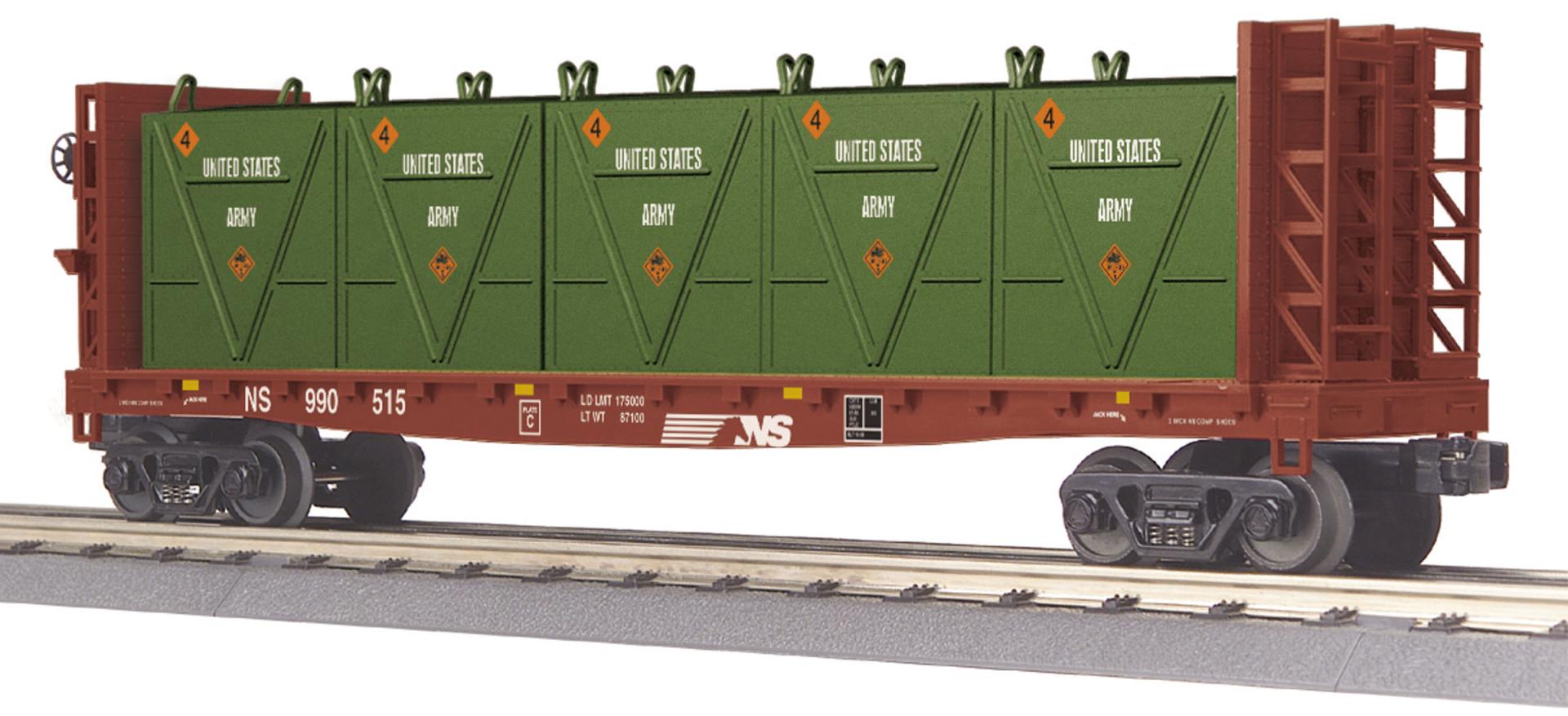
Norfolk Southern O Gauge RailKing Flat Car - w/Bulkheads & LCL Containers
Overview
On its customer Web site, the Union Pacific Railroad characterizes flat cars as available "in a variety of lengths, tonnage and capacities for specialized commodities that are not subject to damage from the elements." Attributes are listed as "easier to load and unload freight," "can drive machinery directly on to the car," and nailable wood or steel floors that allow "nail blocking and bracing to the floor for a damage-free, secure shipment." For shipping large or bulky items, from machinery to vehicles, the flat car has been the solution since the dawn of railroading.
This RailKing model depicts a flatcar with the added protection of end bulkheads to prevent a load from shifting past the ends of the car. Bulkheads are particularly useful with loads such as steel pipe and lumber, as well as the LCL containers on this model. LCL (for "less than carload lot") containers date back at least to the 1920s, when an article in Shipper & Carrier magazine proclaimed that containers were "calculated to work revolutionary changes in freight handling.. The new system provides that the portable 'containers' shall be loaded and locked at the shippers' own store, and conveyed by motor truck and lifted by crane aboard the car. At destination the locked container is carried by motor truck direct to the consignee's door. All of the handling and checking processes between shipper and consignee are done away with at great saving of labor and time." While that language would apply perfectly today to modern intermodal containers, LCLstyle containers are still in use in specialized services such as the "trash trains" that transport garbage to remote dumping sites.
High quality, traditionally sized RailKing Freight Cars provide detailed bodies and colorful paint schemes for the O Gauge railroader. MTH makes an enormous variety of RailKing Freight Cars, including many different car types and roadnames. No matter what era or part of the country you are modeling, RailKing is sure to have something for you.
Features
- Intricately Detailed Durable ABS Body
- Metal Wheels and Axles
- Die-Cast 4-Wheel Trucks
- Operating Die-Cast Metal Couplers
- Colorful, Attractive Paint Schemes
- Decorative Brake Wheels
- Fast-Angle Wheel Sets
- Needle-Point Axles
- (5) Removable LCL Containers
- Unit Measures:11 5/8" x 2 1/4" x 3 3/4"
- Operates On O-31 Curves
Available in Stores
| Dealer Name | City | State | Zip | Contact |
|---|---|---|---|---|
| BRADY'S TOY & TRAIN OUTLET | GREENSBURG | PA | 15601 | 7248388448 [email protected] https://bradystrains.com/ |
| WESTERN DEPOT | YUBA CITY | CA | 95993 | 5306736776 [email protected] https://www.westerndepot.com |
